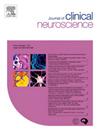Association between body mass index and intracranial procedural complications in patients undergoing endovascular treatment for unruptured aneurysms
IF 1.8
4区 医学
Q3 CLINICAL NEUROLOGY
引用次数: 0
Abstract
Background
The association between body mass index (BMI) and procedural intracranial complications in the endovascular treatment (EVT) of unruptured intracranial aneurysms (UIAs) remains inadequately understood. While BMI is a well-established risk factor in cardiovascular and cerebrovascular disease, its specific role in the context of EVT for UIAs has not been clearly defined. Given the rising prevalence of obesity and the increased detection of UIAs through routine imaging, it is important to clarify whether BMI influences procedural safety or short-term outcomes following EVT.
Methods
This retrospective single-center study included consecutive patients with UIAs treated with EVT between April 2017 and April 2022. Patients were stratified into four BMI categories based on WHO classification: underweight (<18.5 kg/m2), normal (18.5–24.9), overweight (25.0–29.9), and obese (≥30.0). The primary outcome was any intracranial procedural complication (ischemic or hemorrhagic) occurring within 30 days of treatment. Secondary outcomes included symptomatic complications, complications requiring treatment, 30-day modified Rankin Scale (mRS) score of 0–2, and mortality. Multivariate logistic regression was performed adjusting for potential confounders, including sex, dyslipidemia, diabetes mellitus, wide neck, aneurysm location, and EVT technique. Subgroup analyses further evaluated BMI’s role in key risk strata.
Results
A total of 756 patients were included: 70 underweight (9.3 %), 481 normal weight (63.6 %), 163 overweight (21.6 %), and 42 obese (5.5 %). Procedural complications occurred in 46 cases (6.1 %), with ischemic events in 43 and hemorrhagic events in 3. There were no statistically significant differences in complication rates across BMI categories. Similarly, the 30-day favorable outcome rate (mRS 0–2) was high (96.0 %) and did not differ significantly by BMI. Subgroup analyses confirmed that BMI did not significantly impact complication rates when stratified by sex, aneurysm morphology, comorbidities, or treatment type. In multivariate analysis, only aneurysm neck size was independently associated with procedural complications (adjusted OR 1.21, 95 % CI 1.04–1.40; P = 0.02).
Conclusion
BMI was not significantly associated with procedural intracranial complications or short-term functional outcomes following EVT for UIAs. These findings suggest that EVT can be performed safely across BMI categories and that BMI alone should not influence patient selection or procedural planning. Future studies with larger, diverse populations and longer follow-up may provide further insight into the long-term implications of BMI in neuroendovascular procedures.
未破裂动脉瘤血管内治疗患者体重指数与颅内手术并发症的关系
背景:在未破裂颅内动脉瘤(UIAs)的血管内治疗(EVT)中,身体质量指数(BMI)与程序性颅内并发症之间的关系尚不清楚。虽然BMI是心脑血管疾病的一个公认的危险因素,但其在uia EVT背景下的具体作用尚未明确界定。鉴于肥胖症患病率的上升和通过常规影像学检测uia的增加,明确BMI是否会影响EVT的手术安全性或短期结果是很重要的。方法本回顾性单中心研究纳入2017年4月至2022年4月期间连续接受EVT治疗的UIAs患者。根据WHO的BMI分类,将患者分为体重不足(18.5 kg/m2)、正常(18.5 - 24.9)、超重(25.0-29.9)和肥胖(≥30.0)4类。主要终点是治疗30天内发生的任何颅内手术并发症(缺血性或出血性)。次要结局包括症状性并发症、需要治疗的并发症、30天改良兰金量表(mRS)评分0-2分和死亡率。对可能的混杂因素进行多因素logistic回归校正,包括性别、血脂异常、糖尿病、宽颈、动脉瘤位置和EVT技术。亚组分析进一步评估BMI在关键危险层中的作用。结果共纳入756例患者:体重过轻70例(9.3%),正常体重481例(63.6%),超重163例(21.6%),肥胖42例(5.5%)。手术并发症46例(6.1%),缺血性事件43例,出血事件3例。不同BMI类别的并发症发生率无统计学差异。同样,30天的良好转归率(mRS 0-2)也很高(96.0%),且BMI差异不显著。亚组分析证实,当按性别、动脉瘤形态、合并症或治疗类型分层时,BMI对并发症发生率没有显著影响。在多变量分析中,只有动脉瘤颈部大小与手术并发症独立相关(调整OR 1.21, 95% CI 1.04-1.40;p = 0.02)。结论bmi与UIAs EVT术后的手术性颅内并发症或短期功能结局无显著相关性。这些发现表明EVT可以安全地跨越BMI类别进行,BMI本身不应该影响患者的选择或手术计划。未来对更大、更多样化人群和更长时间随访的研究可能会进一步了解BMI在神经血管内手术中的长期影响。
本文章由计算机程序翻译,如有差异,请以英文原文为准。
求助全文
约1分钟内获得全文
求助全文
来源期刊

Journal of Clinical Neuroscience
医学-临床神经学
CiteScore
4.50
自引率
0.00%
发文量
402
审稿时长
40 days
期刊介绍:
This International journal, Journal of Clinical Neuroscience, publishes articles on clinical neurosurgery and neurology and the related neurosciences such as neuro-pathology, neuro-radiology, neuro-ophthalmology and neuro-physiology.
The journal has a broad International perspective, and emphasises the advances occurring in Asia, the Pacific Rim region, Europe and North America. The Journal acts as a focus for publication of major clinical and laboratory research, as well as publishing solicited manuscripts on specific subjects from experts, case reports and other information of interest to clinicians working in the clinical neurosciences.
 求助内容:
求助内容: 应助结果提醒方式:
应助结果提醒方式:


